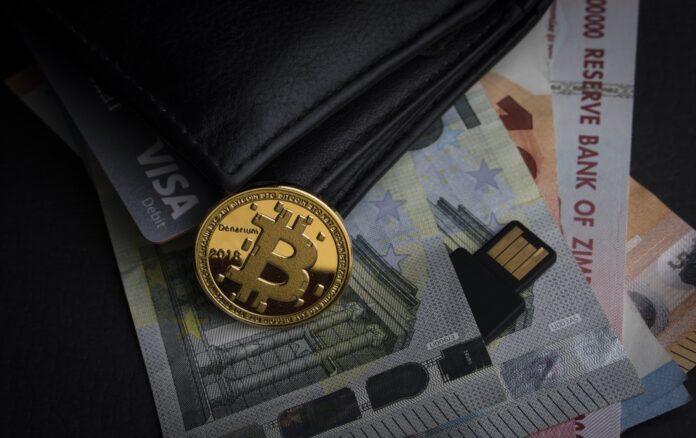
Many say it is a development the blockchain was fueled by the 2008 global financial crisis. Dissatisfaction with governments and institutions, and especially banks, resulted in a decentralized system that was believed to replace the existing, centralized one, subject to the dictates of small groups of people acting in their interest. And indeed, the means to achieve this emerged in the form of the 2009 bitcoin blockchain. Blockchain came to life, and all that was further desired was mass adoption.
And while this process is still going on, technology has taken on some new forms and proportions. Over the years, it has become clear to everyone that the blockchain can serve as much more than the foundation for a decentralized financial system. Decentralized nature and impossibility subsequent corruption of executed records has proven to be fertile ground for the development of a wide range of applications and uses. As the number of different blockchain applications grew, new questions arose. Namely, the countless new possibilities that this technology supports to enable and actions that circumvent the law, and very often those that directly violate it.
Basic rules of operation and application of blockchain

Blockchain provides an alternative solution to the classic technology on which information systems are based as it eliminates the existence of intermediaries in the full sense of the word. Instead of the principle of trust on which the intermediation is based (for example, when transferring money within the banking system, the two parties involved in the transaction rely on the bank to execute the transaction properly) the principle of confirming the execution of the transaction by network participants is formed.
Users of the network based on blockchain technology rely on miners to maintain the system, ie to record transactions, while miners rely on users because they generate transactions by the confirmation of which miners realize benefits (earnings). On the example of cryptocurrencies, miners confirm cryptocurrency or coin transactions and charge a fee for their work. There are two basic principles of mining, known as PoW (Proof of Work) and PoS (Proof of Stake). The difference between these two principles is manifested in the fact that in the first system it is necessary to perform complex mathematical calculations to perform confirmation of transactions.
I use cryptocurrencies, do I have to pay taxes?

The legal status of cryptocurrencies varies from country to country. They are treated either as money, or as a financial instrument, or some third form of asset. Differences in treatment do not only stem from the fact that cryptocurrencies are still a new and undefined phenomenon. There is also the desire of different states to regulate or not regulate them, to tax or not to tax them, and by defining them in a certain way, they classify them in some already existing legal and tax categories. Money itself can be legal tender.
This means that a state has declared it the official means of payment. Usually, but not necessarily, it also means that it is regulated, issued, and earned by a state or an institution authorized by the state. The alternative is unofficial money, like gold, or more recently cryptocurrencies. Apart from the loss of income, nothing prevents a country from declaring gold or a cryptocurrency a legal tender on its territory. On siliconindia.com you can learn more about cryptocurrencies and the blockchain.
Blockchain turned financial waters

Rumors that the application will blockchain technologies disrupt traditional payment systems and the provision of financial services have existed since the first introduction to cryptocurrencies. Disruption among other things it means that it will a particular process, system, or method change and perform a way that is significantly different than usual or expected. That’s why it’s important to detect how this “revolutionary” blockchain is changing the payment system and in what legal framework. The main characteristic of the application of blockchain technology is the absence of a central supervisory body, but all “peers” jointly monitor the system.
In payment transactions, that would mean no more than one body having a duty of supervision and security of data storage. Joint control of all payment system participants has the direct consequence that the high costs of protecting payment transactions from external “attackers” become unnecessary. Due to the lack of centralized supervision, transactions can be executed practically instantaneously, in addition to, perhaps most importantly for the average payment service user, a reduction in the various fees charged in doing so. One of the main advantages is that the blockchain does not know territorial borders, so it is possible to conduct transactions globally much faster.
Digital identity

Thanks to a security mechanism that protects against tampering, blockchain can play a key role in securing digital identities. Blockchain can protect your identity with encryption. Moreover, the blockchain can also be used to build a very strong, secure, and impenetrable identity system, which can prevent unauthorized activities. Blockchain technology has the potential to replace all existing physical identifications and move them to a digital platform. A range of identities such as passports, driver’s licenses, ID cards, and even voter votes can be made digitally using blockchain technology.
It is also possible for all identities to be stored together and secured with a blockchain, making an individual’s identity secure and protected. Using blockchain, unauthorized exchange of various certificates such as educational, marital, death, or birth certificates cannot be performed and thus prevent unauthorized and malicious intent. These included banks, businesses, insurance or healthcare facilities, management, and controlling access to identities is extremely important. And the application of blockchain technology in all these fields can result in flawless identity control and authorization.
Financial services and infrastructure

Blockchain technology can provide a platform for better financial services and payment gateways. Digital cryptocurrency like bitcoin, as it is already known, is powered by blockchain technology. The use of such cryptocurrencies can restore existing payment systems and other financial services. For example, if a certain person sends money to his family in another country, possible funds transfers are banks, payment applications (such as PayPal), or other intermediary organizations such as MoneyGram or Western Union.
But their costs for services are high, even for micropayments. All these intermediaries can be eliminated and the money can be transferred directly from the sender to recipients using cryptocurrencies, such as bitcoin, without the involvement of any intermediary. Transaction tracking and property rights can also be implemented in the financial sectors using blockchain. The use of blockchain technology in the financial sector will not only provide a free system payment, but will also provide a secure and secure way for network transactions to take place.
















